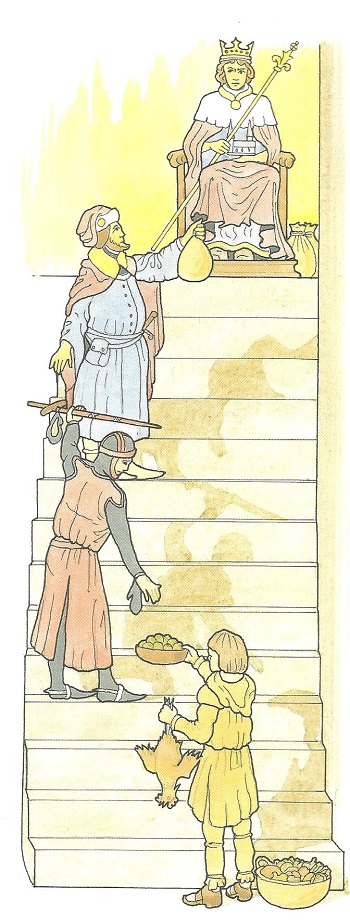
Feudal England

Introduction
William said that ALL the land in England belonged to him.
He organised the land in a certain way.
William kept one fifth of the land in England for his own royal estates. He gave a quarter of the land to the Church.
The rest of the land he shared out between his Norman followers. There were only about 180 of them.
These Normans were the tenants-in-chief (they were usually barons or bishops).
In return for their land, they took an oath of loyalty to William and promised to provide soldiers or money for William's army.
They kept some land for themselves and split up the rest into manors, which they gave to their followers.
These men were the under-tenants (they were usually knights).
In return for their land, they took an oath of loyalty to the baron and promised to serve as a knight in the army.
They kept some land (called the demesne) for themselves and shared the rest between the Saxon peasants who lived on their manor.
Most Saxons were owned by the lord of the manor; they were 'villeins'.
In return for their land, they had to obey the lord of the manor and give him part of their crops. They also worked without pay on the lord's land.
Villeins were not free men; they were the possession of their lord, and could not leave the manor without permission.
This system is known as the Feudal System.
Study the Introduction and the picture, then answer the question sheet by clicking on the 'Time to Work' icon at the top of the page.
1 The Feudal System
This modern drawing depicts the Feudal System:

Links:
The following websites will help you research further:
The Feudal System:
•
BBC Bitesize
•
TimelinesTV
Did the 'Feudal System' ever
exist? •
Google Image search for the "Feudal System"
•
BBC Bitesize
- interpretations